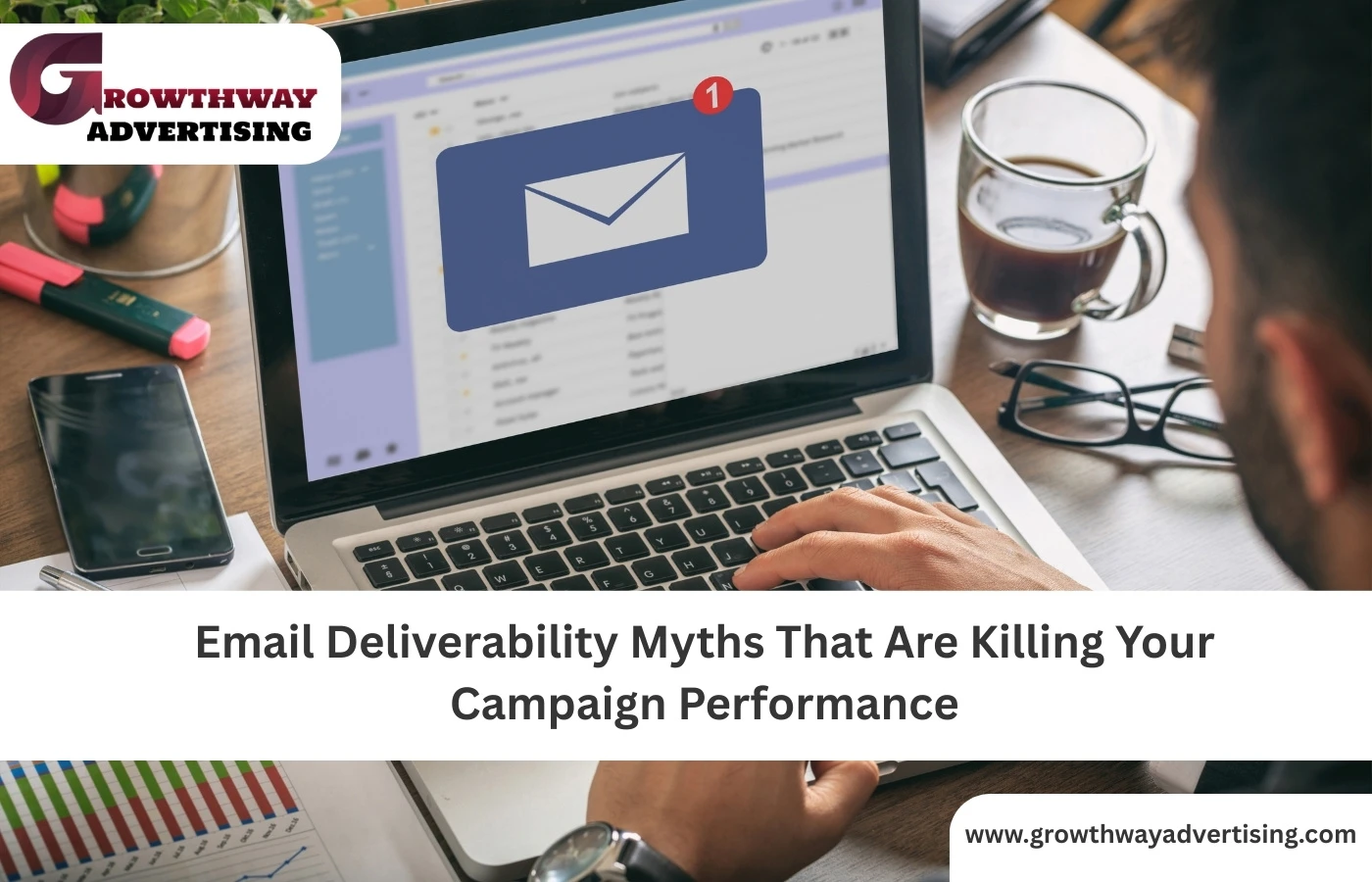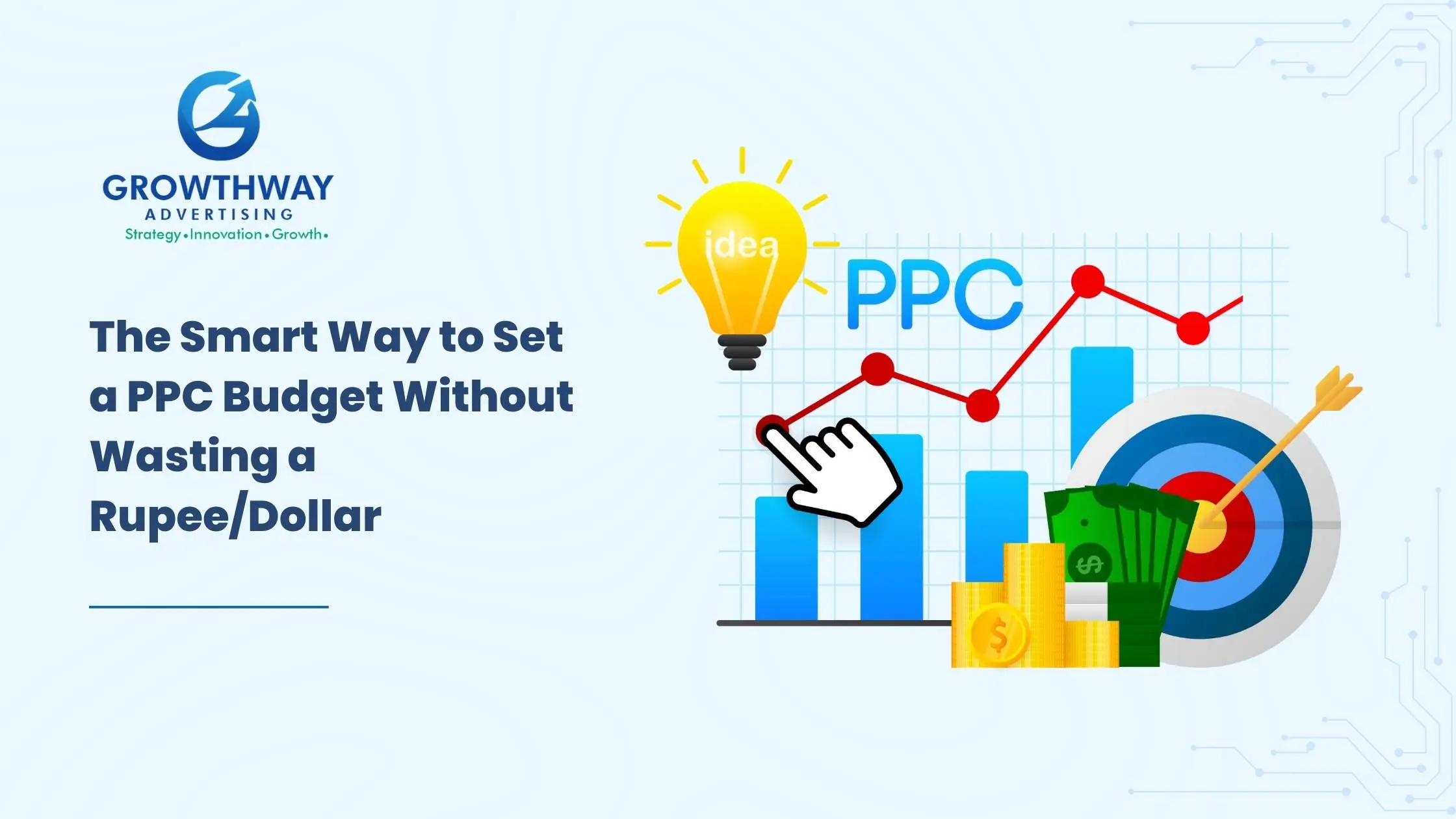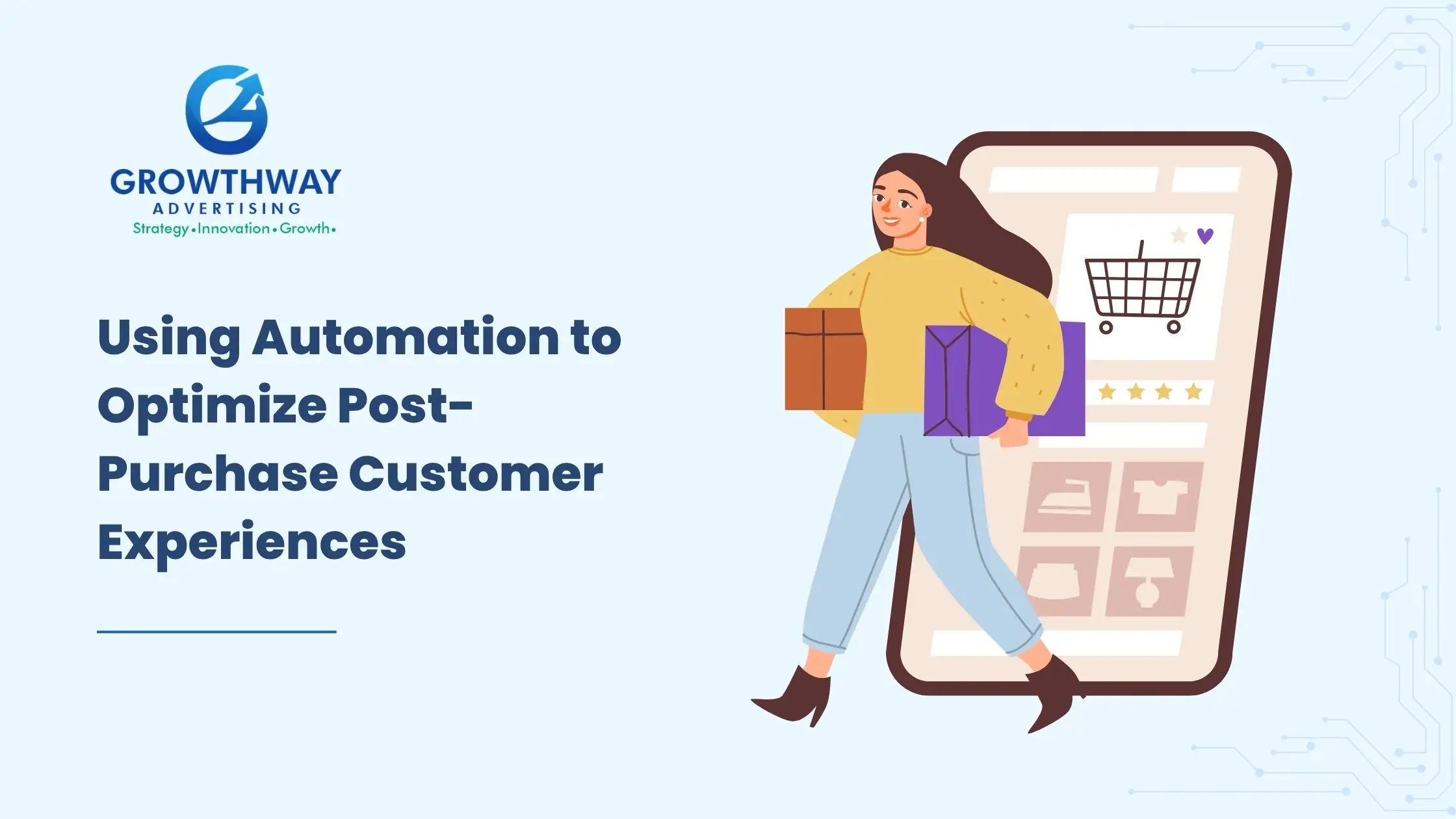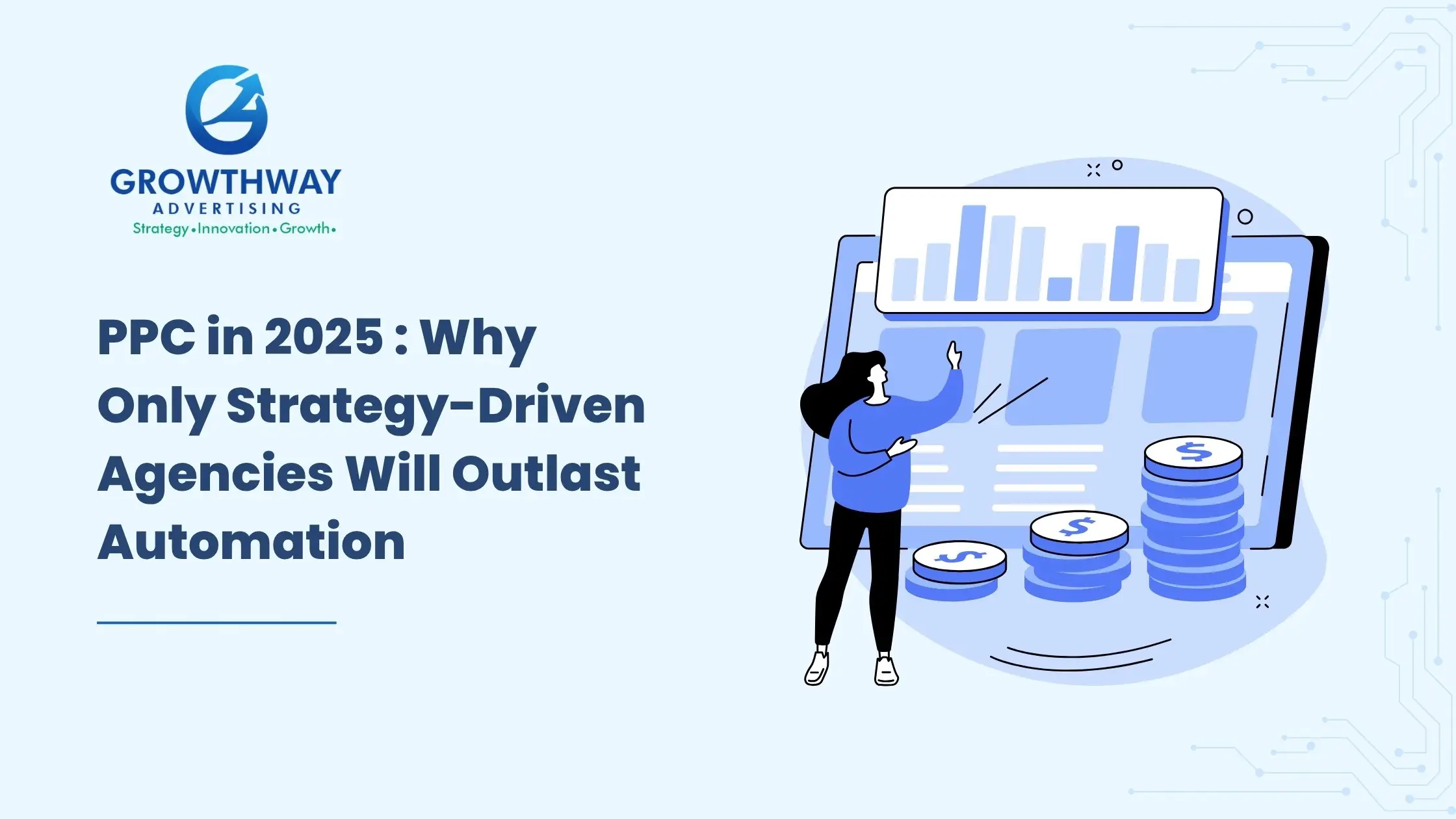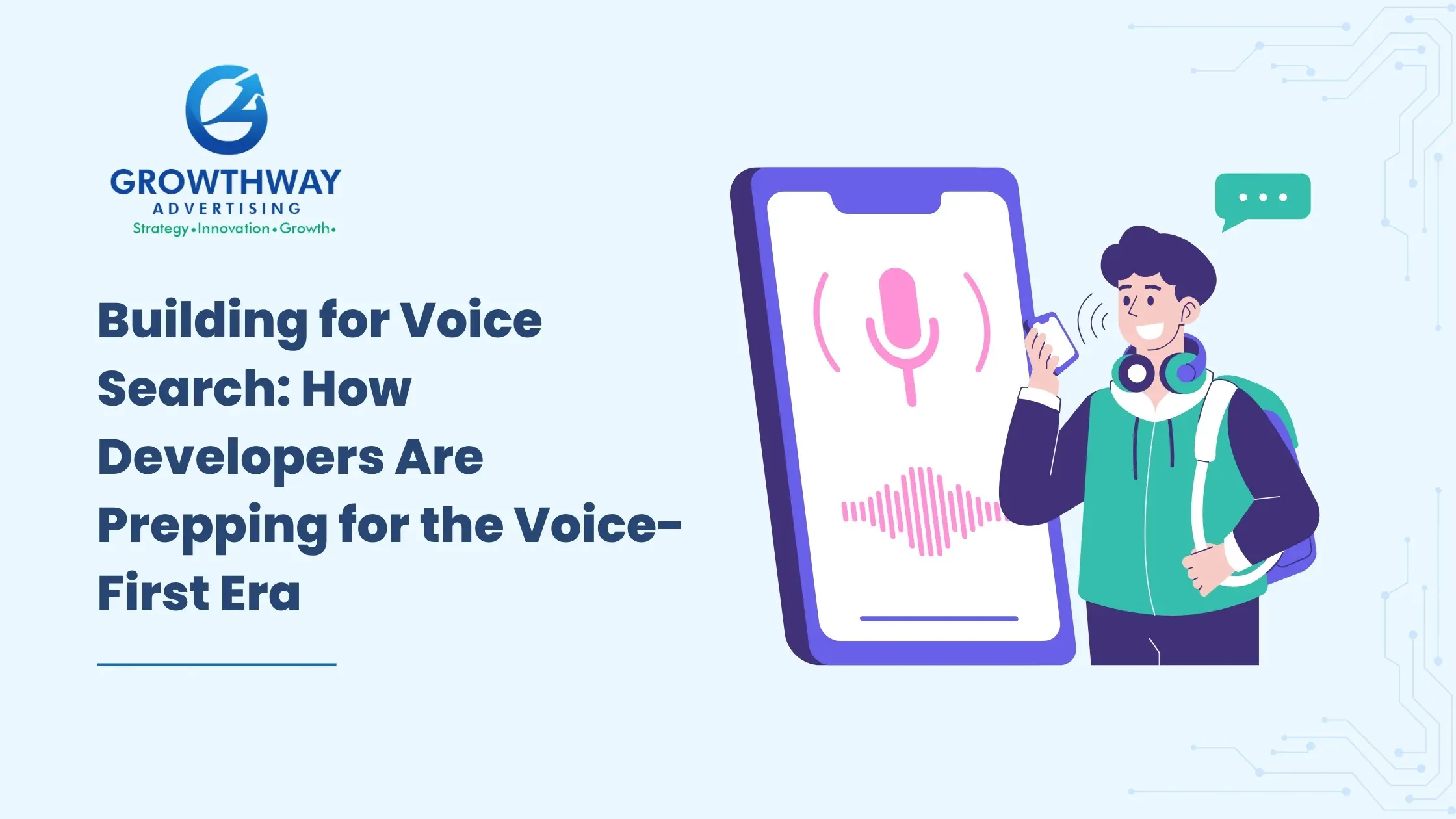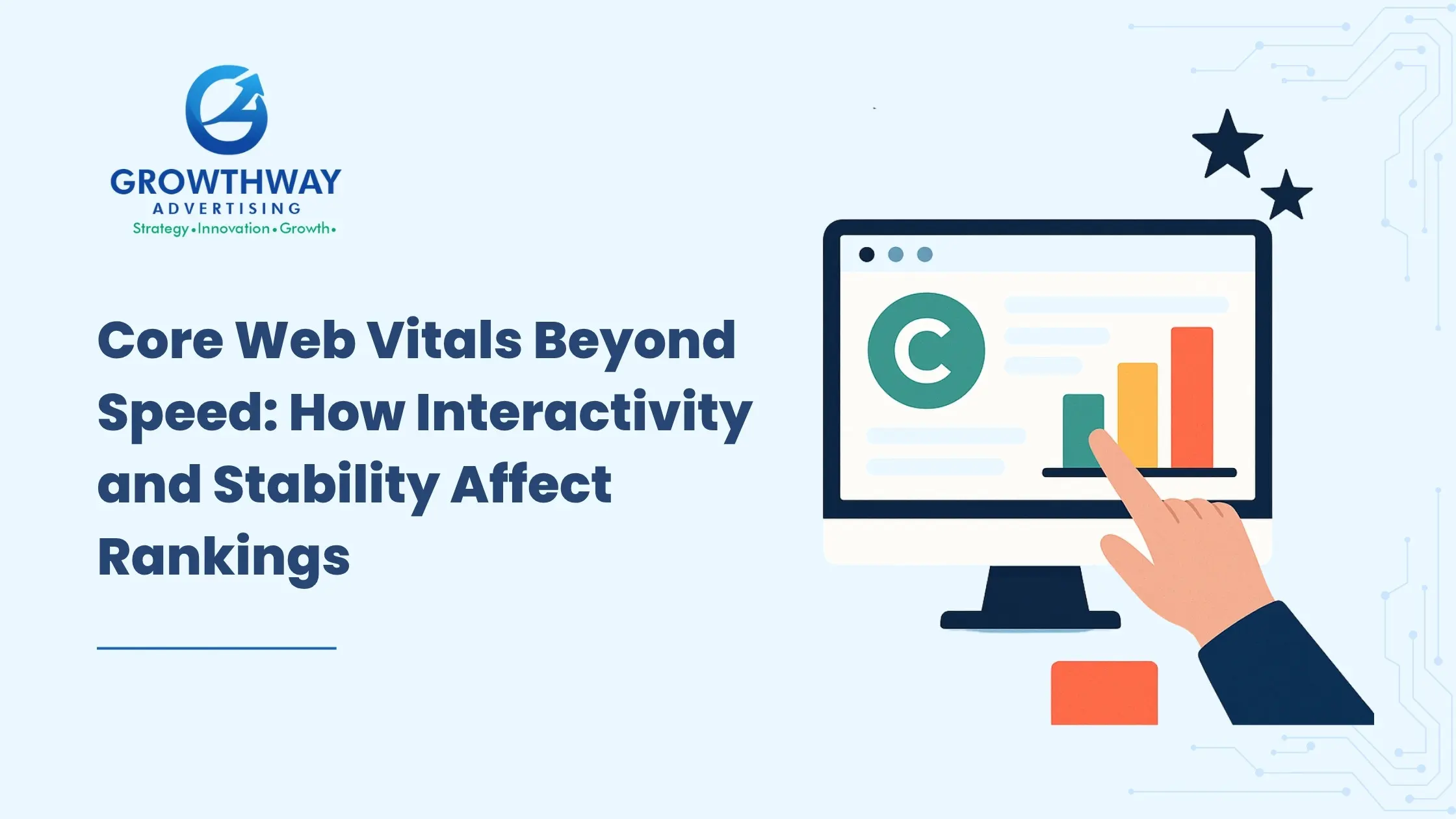In the case of an email marketing tool, having the capacity of delivering your message to the inbox of your audience is crucial. However, a significant number of marketers such as those who collaborate with email marketing agencies like in India and other providers across the world are victims of the trap of age-old myths that harm their email deliverability. These misconceptions cause a lot of missed opportunities, wasted budgets, and low engagement rates, which can have a severe overall impact on your campaign performance.
In this blog, we will shed light on the most common myths around email deliverability, some of which are commonly ignored by even the most successful email marketing agencies and discuss the reality of deliverability that you need to consider to have your emails in the inbox.
Myth #1: Spam Trigger Words Automatically Send You to Spam
It is a myth that incorporating different words such as free, guaranteed, or win in your subject lines is an automatic gate pass to the spam box. It is an old theory and it is no surprise why people believe it knew people, but these words should get people alarmed.
However, modern spam filters deployed by major ISPs are incredibly sophisticated. The modern filtering mechanisms are much more advanced, employing advanced algorithms and machine learning models and analyzing reasons much beyond keywords. They evaluate:
- Sender behavior and reputation
- Engagement metrics such as open and click rates
- Email content context and layout
- Frequency and list quality
Instead of panicking over the list of bad words, you would be better focused on email authentication (SPF, DKIM, DMARC), on keeping clean and engaged lists with regards to the subscribers, and sending personalized relevant material that invites communication.
Myth #2: A New IP Address Will Fix Your Deliverability Issues
Most marketers believe that simply migrating their campaigns to a new IP address (sometimes provided by alternative email marketing service providers) will fix their inbox placement. This may sound as a quick-fix but it seldom is.
ISPs go beyond just the IP address when assessing the credibility of your emails. They consider the overall:
- Sender reputation
- Domain reputation
- Engagement rates
- Complaint rates
All these accumulate with time and accompany you no matter what your IP is. In fact, switching to a new IP without addressing the root causes of low engagement or high complaint rates can delay recovery and cause further harm.
Myth #3: Email Authentication Guarantees Inbox Placement
Setting up email authentication protocols like SPF, DKIM, and DMARC is crucial and non-negotiable when you work with professional email marketing agencies in India or anywhere else. Authentication identifies that you are an actual sender and antispamming.
But on the other hand, authentication, though very essential, cannot guarantee the destination of your emails to be in the inbox. It is only one element of a deliverability puzzle, which consists of:
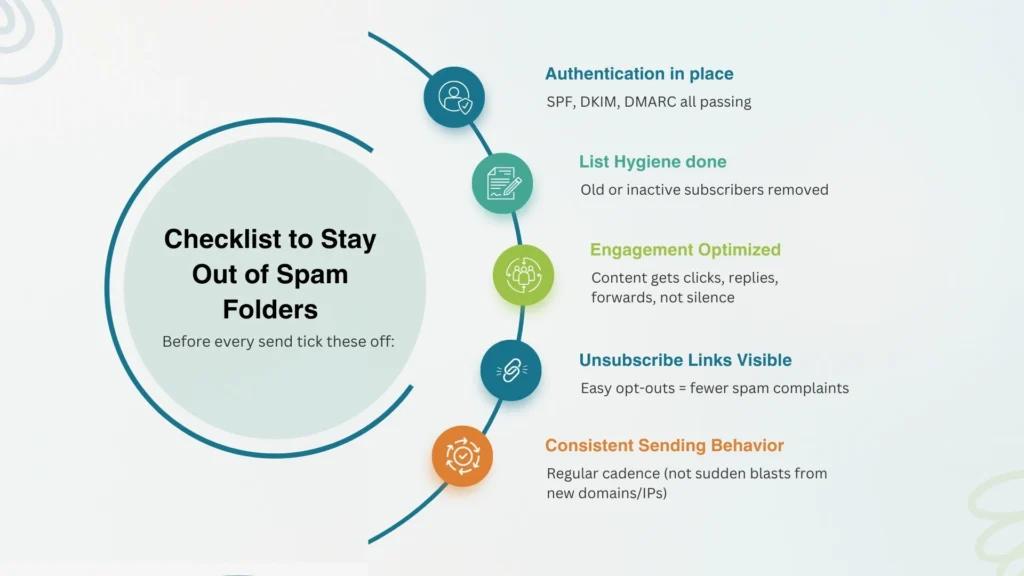
- Consistent sending behavior
- List hygiene and subscriber engagement
- Reputation with ISPs
Even in a perfect authentication set up, poor engagement or failure to meet best sending practices will still lead to email being delivered to spam or even blocked.
Myth #4: Low Unsubscribe Rates Are Always a Good Sign
Low unsubscribe rate may appear, at first sight, to be a positive sign of satisfaction of subscribers. But what marketers fail to recognize is that a very important point to note, many subscribers will mark your emails as spam when they can not easily locate the unsubscribe link and feel cornered.
Spam complaints have a much higher negative impact on your sender reputation than unsubscribes. Mailbox providers monitor spam complaint rates closely and penalize senders with a high volume of complaints much more harshly.
To maintain strong deliverability:
- Make unsubscribe links clear and easy to use.
- Honor unsubscribe requests promptly.
- Provide subscription management options where possible.
This creates confidence between yourself with your subscribers and your mailbox providers.
Myth #5: Bigger Email Lists Always Mean Better Performance
“More is better” is a common mindset but a dangerous one for email marketing services focused on sustainability. Sending messages to big but stagnant or unengaged lists will decrease the overall engagement rate, and negatively impact your reputation and inbox placement.
ISP examines how recipients respond to your incoming messages; when most of them do nothing with the messages (other than deleting them), or worse still box your messages as spam, your sender score plunges down the chart.
Best practices include:
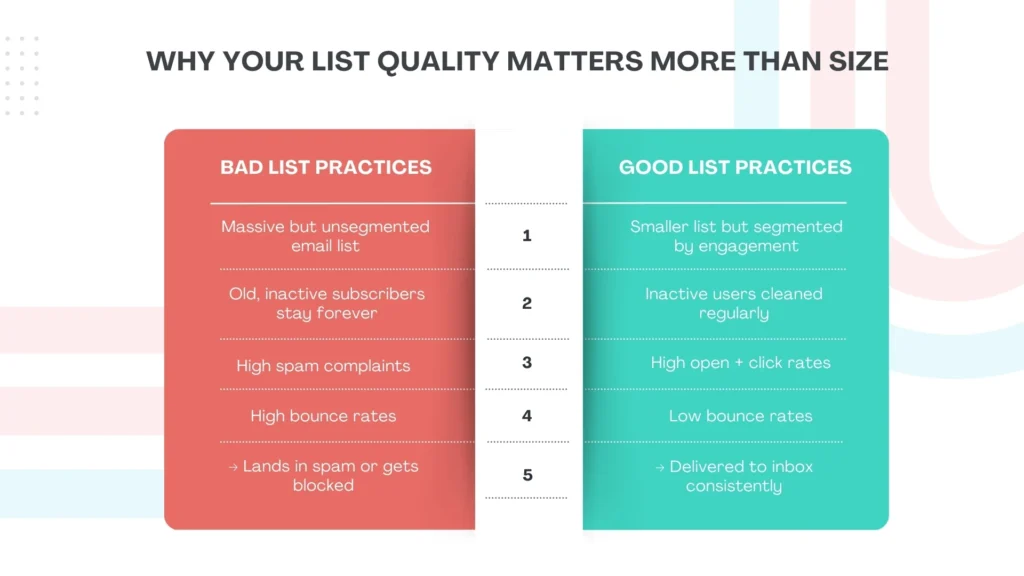
- Segmenting your list by engagement (active vs inactive users)
- Regularly cleaning your list to remove unengaged subscribers
- Focusing campaigns on users who have shown interest or recently interacted with your brand
It is always true that quality overshadows quantity as far as email deliverability is concerned.
Myth #6: The Gmail Promotions Tab Is the Enemy
Deliverability challenges usually make marketers be afraid of the Gmail Promotions tab, believing that it is nothing but the spam folder. The false belief results in trying to get around the system in vain.
Factually, the Promotions tab is all that is available as Gmail structured inbox experience, but it qualifies as an inbox placement location. Research indicates that a number of subscribers constantly check their Promotions tab to find deals and offers they find useful and interesting, as well as newsletters.
Rather than trying to avoid Promotions:
- Focus on providing value and relevance in your content.
- Educate your subscribers about where to find your emails.
- Encourage engagement like clicks and opens that improve your sender reputation.
Myth #7: There’s a Universal Best Time or Day to Send Emails
Most email marketing firms advertise the most effective time to email off of archetypal research. Reality is that each audience is unique and a success in timing is personal.
ISPs and email marketing service providers today understand this; many ESPs have turned to machine learning to optimize delivery timing based on receiver preference, be that the early birds, or those bottom-floor owls.
Your best strategy is to:
- Test send times and days based on your own audience data.
- Use subscriber segmentation to target different groups with personalized sends.
- Focus on continuous optimization rather than industry generalizations.
Myth #8: Open Rates Are Always Trustworthy Performance Indicators
In the case of modern privacy updates, such as Apple Mail Privacy Protection, a large number of tracked opens nowadays are artificial ie. and not determined by a subscriber opening an email; but, rather by email clients preloading images, even when the email has not been opened.
To get a clearer picture of how your campaigns perform, track and prioritize:
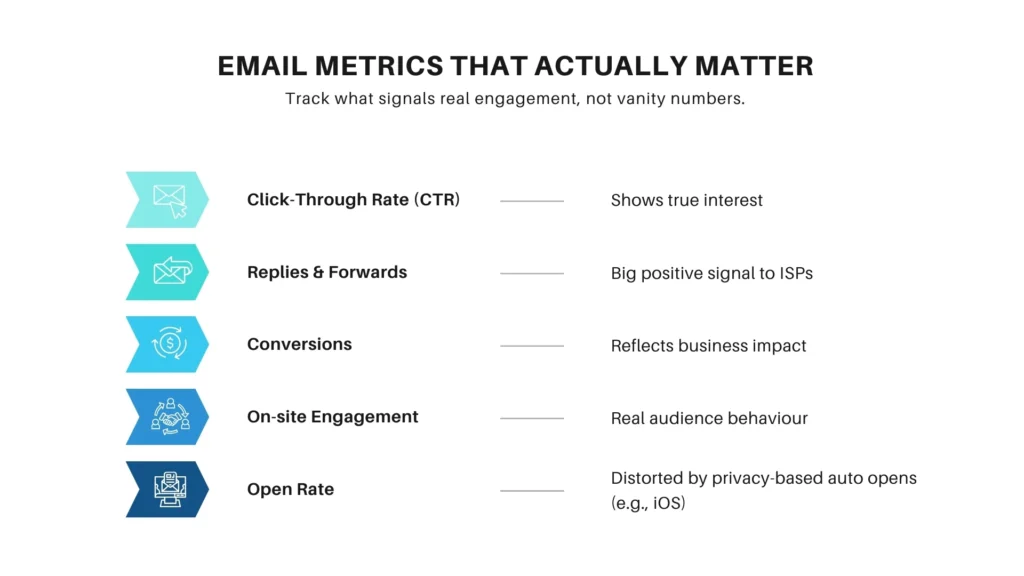
- Click-through rates
- Reply and forward rates
- Conversion metrics and on-site engagement
These signals better reflect genuine user interaction and improve your sender reputation and inbox placement.
Myth #9: Attachments make email look more valuable.
New senders often attach PDFs, catalogues, or images thinking it makes the email feel premium. Truth is, attachments trigger risk scanners.
- Attachments slow down delivery due to antivirus checks
- Gmail/Prem filters treat attachments as “promotional” or “suspicious”
- Linking out performs better safer + more trackable engagement for email marketing agency teams
Practical Tips to Outperform These Myths
- Always keep email authentication up to date and monitor your domain and IP reputation.
- Regularly clean and segment your audience to maintain engagement.
- Make opt-outs easy to reduce spam complaints.
- Track engagement comprehensively not just opens but replies, clicks, and forwards.
- Test send times and subject lines based on your unique audience.
- Stay informed and compliant with all relevant local and international legislation.
Achieving good email deliverability is all about discarding outdated myths and adopting multi-faceted approaches that center on quality, compliance, engagement and technology. By debunking these common myths and paying attention to what actually works will put your campaigns and your email marketing agency, or services- in the competitive inbox winner position.
FAQ’s
Email deliverability is the ability of your emails to reach the intended recipients’ inboxes rather than spam or junk folders. It’s critical because no matter how good your content is, if your emails don’t land in the inbox, your campaign performance suffers dramatically.
Setting up authentication methods like SPF, DKIM, and DMARC verifies that you are a legitimate sender and helps prevent spoofing. These protocols build trust with ISPs and improve inbox placement chances, but they don’t guarantee 100% inboxing on their own.
Modern spam filters are much more sophisticated than just checking for certain “spammy” words. Filters look at your sender reputation, engagement rates, and technical setup. While avoiding careless use of certain phrases is good, obsessing over individual words will not fix poor email deliverability.
No. Your email deliverability and sender reputation depend on domain reputation, engagement, and sending practices, not just the IP address. Jumping to a new IP without fixing root issues usually delays recovery or even makes things worse.
Yes. Larger lists with many inactive or unengaged users hurt your email deliverability. High engagement rates matter more than list size. Use subscriber segmentation to target active users and clean your lists regularly.
Segmenting your audience based on engagement, preferences, location, and behavior makes your messages more relevant, increasing engagement and fostering a positive sender reputation. Blanket emails to all subscribers reduce relevance and raise complaints.

